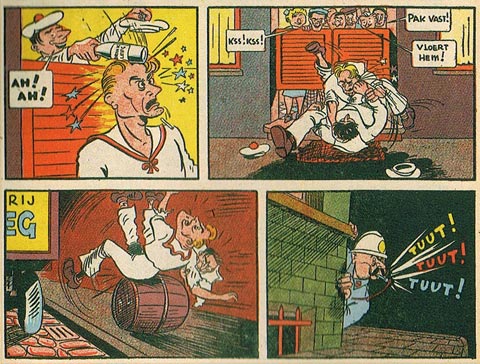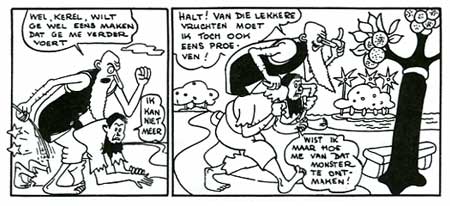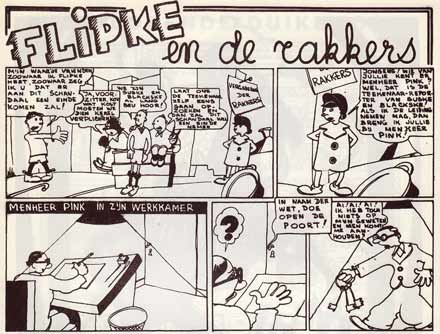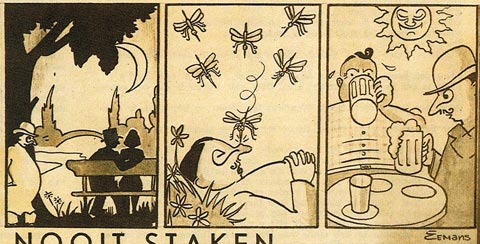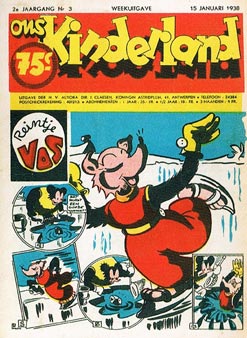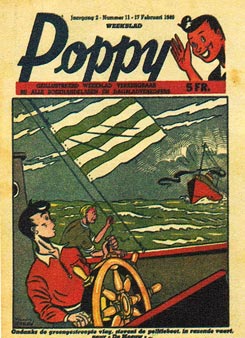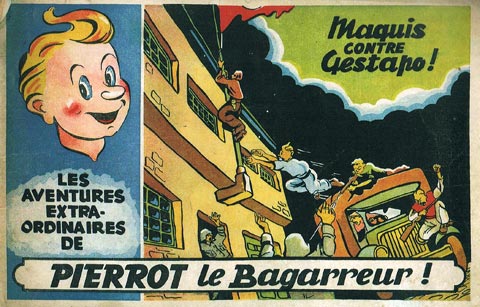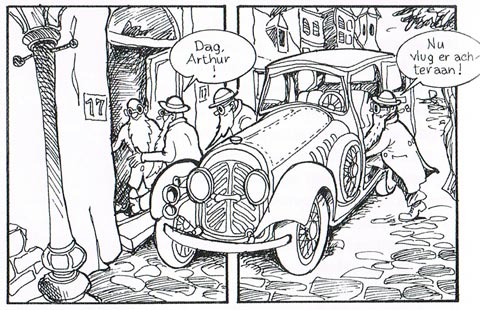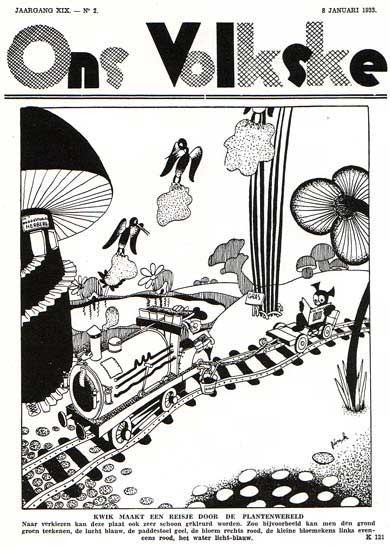'Pluk Zoekt Zijn Vader' ('t Kapoentje, 8 January 1948).
Eugeen Hermans, who is best known under the pen names Pink, was a pioneer in Flemish comics. He began his career as lay-out man and illustrator for newspaper De Standaard in 1931. He stayed with the paper until 1936, making a variety of illustrations for covers, advertisements and the children's section 'Voor Jonge Oogen'.
'Sindbad'.
Hermans published his earliest work under the signature anS or Studio Periodica. It was also under this name that he began his association with Ons Volk and its children's supplement Ons Volkske in 1932. Here Hermans made his first comics, which influenced comic artists like Willy Vandersteen and Marc Sleen.
'De Leeuw van Vlaanderen'.
Assuming the pen name Pink, he made comics in a variety of genres. He did comic adaptations of classic tales like 'De Leeuw van Vlaanderen', 'Don Quixote', 'Baron von Münchhausen', as well as fairy tales such as 'De Gelaarsde Kat', 'Hans en Grietje' and 'Sneeuwwitje'. He also did various humorous and adventure series, like 'Suske en Blackske op Avontuur', 'Kwik en Mot', 'Flipke en de Rakkers', 'Anneke en Stanneke', 'Pits en Pats', 'Bee-Bee', ''t Kabouterke', 'Zwarte Bill' and 'Het Spookschip'.
'Flipke en de Rakkers' (Ons Volkske, 1932).
He was the first Flemish artist to create a continuing story with text balloons ('Suske en Blackske' in 1932) and was largely responsible for the entire content of Ons Volkske. Pink got assistance from Antoon Herckenrath, who succeeded him when he left the paper in 1937.
Mijnheer Pip - "Zij Die Nooit Staken" (Ons Land #26, 27 June 1936).
Hermans then became editor and lay-out artist for the weeklies published by NV Altoria. He made political cartoons for Hooger Leven and became the illustrator and layout for Ons Land and its short-lived children's version Ons Kinderland (1937-38). He launched new comic strips such as 'Mijnheer Pip Wandelt door het Leven' and created illustrated tales like 'Sindbad de Zeevaarder', 'Reintje Vos', 'Zeven in één Slag' and 'Pinokkio: Zonderlinge Avonturen van een Houten Harlekijn'. During this period, he signed with his own name, or with the contraction 'Eemans'. Hermans' association with Ons Land lasted until the magazine's disappearance in 1944.
Covers for Ons Kinderland (15 January 1938) and Poppy (17 February 1949).
Shortly before World War II, Hermans was mobilized and during his period, "Corporal" Hermans contributed comic strips like 'Mr Piot' to the soldier's magazine Pinnekensdraad. After the War, Hermans returned to the relaunched edition of Ons Land, where he made illustrations and comics like 'Slim en Knok' under the name Prof Pink until 1949.
'Pierrot, le Bagarreur' (1945).
From 1947 on, Hermans was also present in 't Kapoentje under the name El Anton with the character 'Pluk'. He was associated with the short-lived comic magazine Poppy in 1948-49, where he made the title comic and other educational sections in cooperation with Professor Coremans under the name Thomas Percy. Hermans and Coremans also produced the World War II story 'Pierrot, le Bagarreur: Maquis contre Gestapo' ('Pietje de Vechtjas: Verzet tegen Gestapo'), published under the signature Capt. Lewis Jackson by Dereume in Brussels in 1945.
Redrawn version of 'Flipke en de Rakkers' (Pink Omnibus, 1981).
Eugeen Hermans dropped his comics activities in the late 1940s and focused on illustrating books by authors like John Flanders, Valère Depauw and Johan Daisne, doing layouts and advertising assignments from then on. He reworked several of his older comics for the 1981 anthology 'Pink Omnibus', published by De Dageraad.
Cover for Ons Volkske (8 January 1933).



